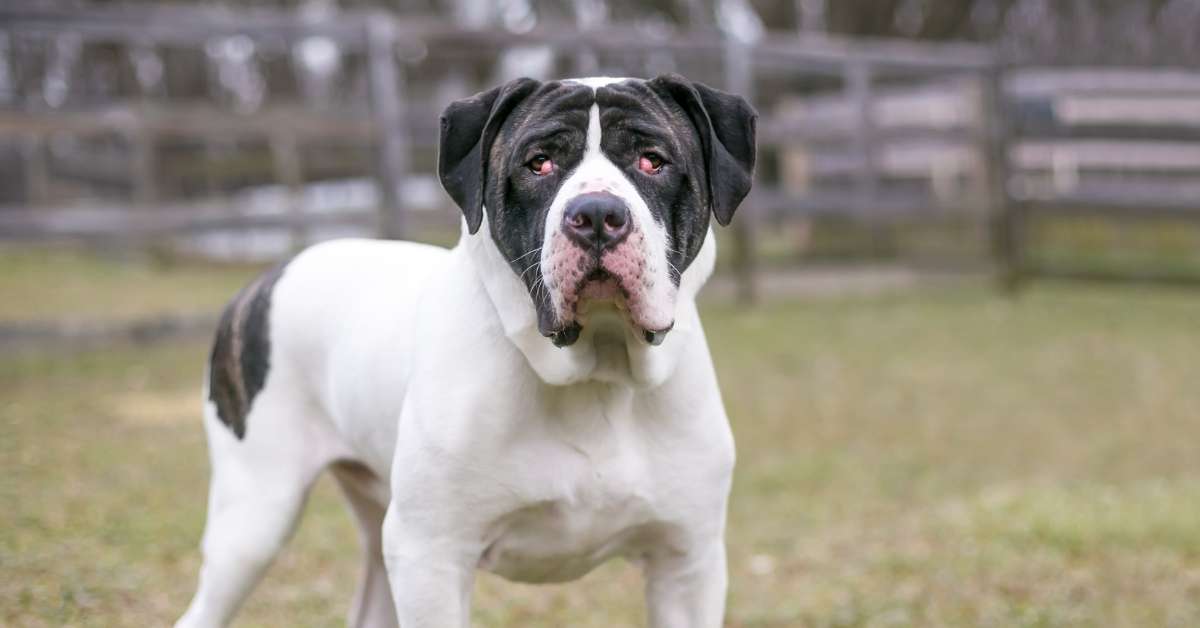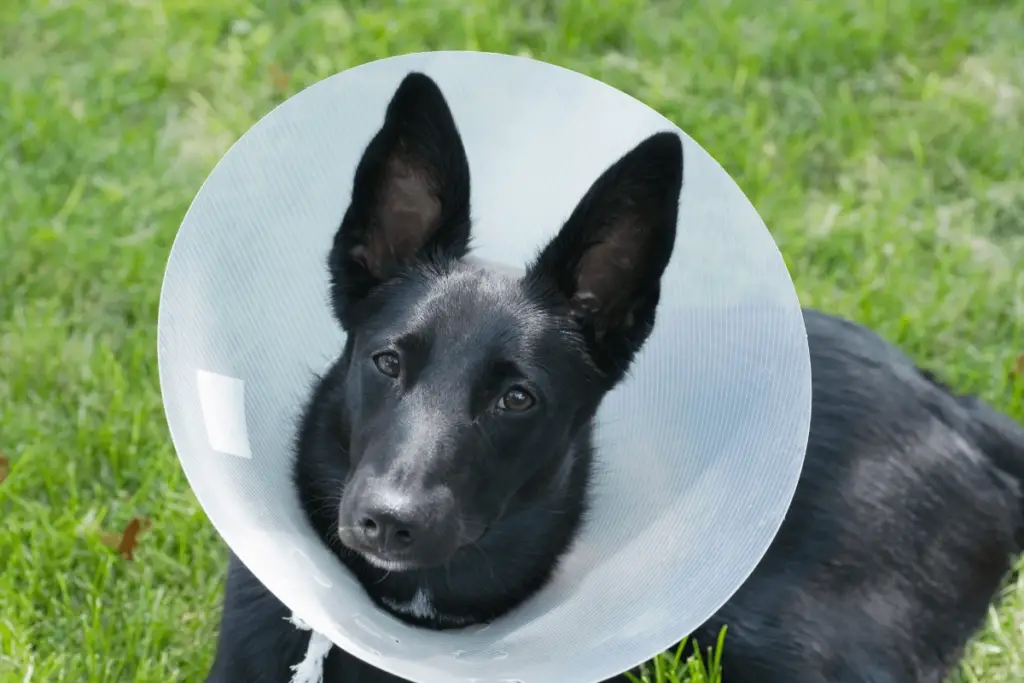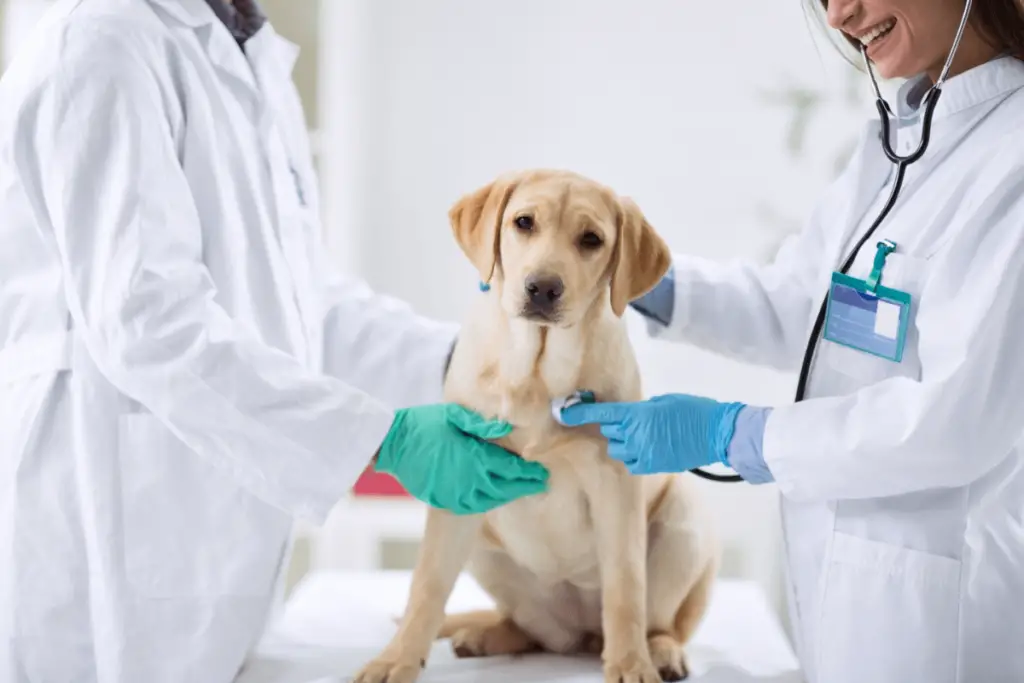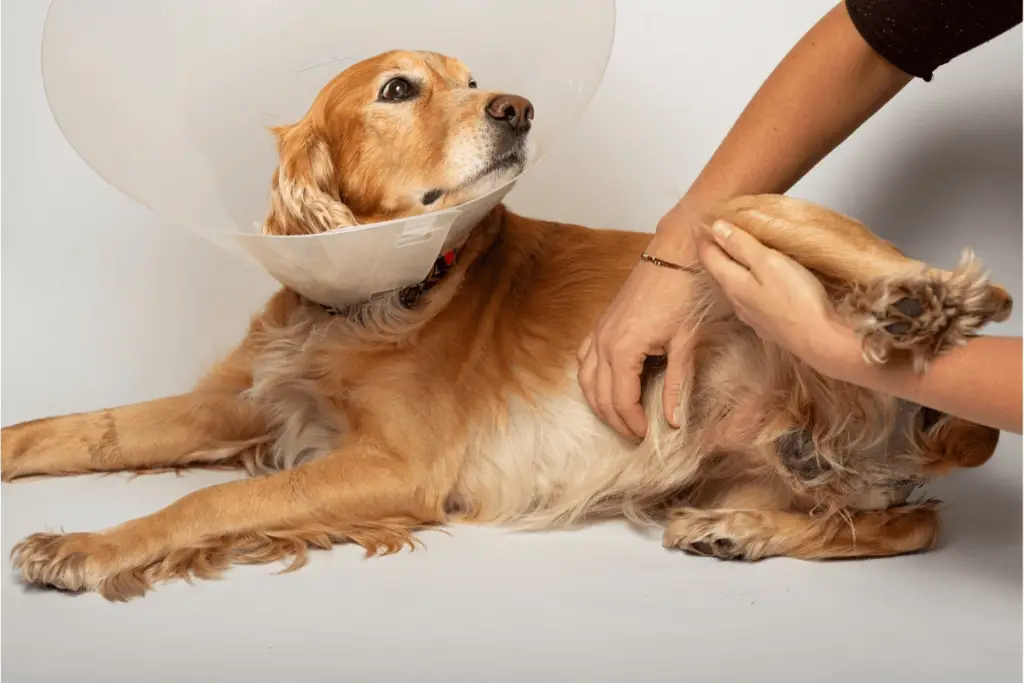Dog Anus Gland Abscess Treatment: Recognize Common Symptoms

Have you ever noticed your furry friend scooting across the floor or licking their behind more than usual?
While it might seem odd or even a bit humorous at first, these behaviors could signal a not-so-funny issue.
In this article, we aim to provide a comprehensive overview of dog anus gland abscess treatment, including how they develop, how to recognize them, and the steps you can take to treat and prevent these painful occurrences.
So, let’s get started on this important journey to keep our dogs healthy, comfortable, and as happy as they make us.
Key Takeaways:
- Look out for signs like your dog scooting its rear on the ground, licking or biting at the area, swelling near the anus, and noticeable discomfort.
- Anus gland abscesses can result from impaction, infection, or trauma to the anal glands. Factors like poor diet, obesity, and lack of exercise can increase the risk.
- Treatment typically involves antibiotics, pain relief, and in some cases, surgical intervention. Keeping the area clean and adhering to the veterinarian’s instructions is crucial.
- Regular check-ups, a healthy diet, and proper grooming can help prevent future occurrences.
Anal gland abscess is a common yet often overlooked health issue that can cause significant discomfort to our furry friends.
This condition, characterized by an infection in the anal glands, can lead to a range of uncomfortable symptoms, from scooting and excessive licking to visible swelling and difficulty defecating.
Now, this is important, understanding the signs, causes, and treatment options for anal gland abscesses is crucial for maintaining the health and happiness of our dogs.
With an estimated 15.7% of dogs affected by this condition, it’s clear that awareness and prevention are key to ensuring our pets lead comfortable lives.
What Are Dog Anal Glands?
Let me guess, you’re wondering how these anal glands work and why they’re so important to your dog’s health.
Anal glands, also known as anal sacs, are small but significant anatomical features found in both male and female dogs, as well as in cats and other animals.
These glands are positioned on either side of the animal’s anus, typically at the four o’clock and eight o’clock positions, akin to the numbers on a clock face.
Each gland is about the size of a small grape, and its walls are lined with numerous sebaceous glands. These sebaceous glands produce a unique, often unpleasant-smelling fluid.
How Do Anal Glands Work?
Under normal physiological conditions, sebaceous gland fluid accumulates within the anal sacs and is released through a tiny duct or canal that opens just inside the anus.
The release of this fluid usually happens when the dog defecates, marking the feces with a distinct scent.
This process is a critical part of canine communication, aiding in territorial marking and individual identification among dogs.
The presence of these glands and their secretions plays a vital role in a dog’s social interactions and biology.
What Is Anal Gland Disease In Dogs?
But what exactly is anal gland disease in dogs?
Let me clarify, it’s a common issue in small breeds of dogs that affects their anal sacs, leading to several problems such as impaction, infection, abscess, and, in some cases, tumors like apocrine anal gland adenocarcinoma.
Types of Anal Gland Problems in Dogs

Anal Gland Impaction
According to WebMD, this condition happens when the ducts leading from the glands become inflamed, causing the secretions inside the anal sacs to thicken.
This results in the glands swelling and becoming difficult to empty, which can be quite uncomfortable for dogs, especially when they are trying to pass feces.
The main treatment involves manually expressing these glands to relieve the blockage, typically performed by a veterinarian.
Anal Gland Infection or Abscess
Infections occur when the thickened secretions within the anal sacs create an environment that’s conducive to bacterial growth.
Normally, bacteria present in feces are expelled with bowel movements, but when the sacs are impacted, these bacteria can cause an infection.
This leads to the production of pus within the sacs, and an abscess may form if the infection worsens.
Abscessed anal glands can become very painful and may appear as warm, swollen areas near the anal opening. They might rupture, releasing pus that is either greenish-yellow or blood-tinged.
Ruptured Anal Gland Abscess
If an abscess is not treated in time, it can burst open, causing significant pain and leading to a discharge of pus.
This not only causes distress to the dog but can also lead to more severe complications if the infection spreads to surrounding areas.
Anal Gland Cancer
Although less common, dogs can develop tumors in their anal glands, with apocrine anal gland adenocarcinoma being one of the types.
Particularly in older, female dogs, with breeds like German Shepherds and Dachshunds being predisposed.
Clinical signs can vary, including hematochezia (bloody stool), perianal bleeding, caudal limb edema, vomiting, polydipsia, polyuria, and lethargy. Laboratory findings may reveal hypercalcemia.
On physical examination, the glands may be enlarged due to the tumor, yet unable to express any material.
Signs & Symptoms of Dog Anal Glands Abscess
When it comes to your dog’s health, being aware of any changes or unusual signs is key. Anal sac disease, a specific and painful condition, is no exception.
Understanding their symptoms is crucial for early detection and effective treatment.
According to PDSA symptoms of anal sac abscess include:
- Swelling and Redness: One of the first signs you might notice is swelling or redness near your dog’s anus. This area may also feel warmer than usual.
- Licking or Biting: Dogs with an abscess will often lick or bite at their rear due to discomfort or pain.
- Scooting: The act of scooting their bottom on the ground is a common indication of anal discomfort in dogs.
- Visible Pus or Blood: In advanced cases, you might see pus or blood near the affected area.
- Difficulty Defecating (Dyschezia): Due to the pain and swelling, your dog might struggle or show reluctance in defecating.
- Changes in Behavior: Dogs with an abscess might seem more lethargic or irritable due to the discomfort and pain.
Causes of Anal Gland Abscesses
So what’s the solution? Understanding what leads to the formation of anal gland abscesses in dogs is a step closer to preventing this painful condition.
Here are the common culprits:
- Poor Hygiene: Insufficient cleaning of the anal area, especially in long-haired breeds, can increase the risk of infections leading to abscesses.
- Obesity and Muscle Tone: Overweight or obese dogs may suffer from poor muscle tone around the anal area. This lack of muscle strength can hinder the natural expression of the anal sacs during bowel movements, contributing to the risk of impaction and subsequent infection.
- Skin and Gland Conditions: Generalized seborrhea, a condition that results in excessive secretion from the glands, including those in the anal area, can also lead to the retention of sac contents.
- Dietary Issues: An inadequate diet can result in poor stool consistency, impacting the natural expression of these glands.
Diagnosis of Anal Gland Abscesses

The diagnosis of anal sac abscesses in dogs is a precise process that veterinarians undertake with great care.
An accurate diagnosis is essential for determining the most effective treatment approach.
Here is a detailed look at the steps involved in the diagnostic process:
- Clinical Examination: The initial step involves a comprehensive physical examination by the veterinarian, focusing on the dog’s anal area. This is to check for any visible signs like swelling, redness, or discharge which might indicate an abscess or infection.
- Palpation: The vet gently palpates, or feels, around the anal glands. This helps in determining the extent of the abscess and assessing the dog’s level of discomfort or pain. Palpation is a crucial step in evaluating the severity of the condition.
- Expressing the Glands: If it is safe and the dog is not in excessive discomfort, the veterinarian may attempt to express the glands. This involves gently squeezing the anal glands with the thumb and index finger, usually while holding a paper towel or rag behind the dog’s anal area to catch any fluid. Successfully expressing the glands can release a smelly, brown fluid, providing insight into the state of the glands. Both glands are typically expressed to ensure a thorough evaluation.
- Sample Collection: In certain cases, a sample of the fluid or pus from the glands is necessary for a more detailed analysis. This helps in identifying the specific type of infection present. Typically, three swabs are collected: one from the rectum and one from each anal sac (left and right). This comprehensive sampling is key to determining the most effective treatment plan.
- Imaging Tests: X-rays or ultrasounds might be necessary to understand the abscess’s size and impact on surrounding tissues.
- Blood Tests: These can be conducted to assess the dog’s overall health and to check for any underlying conditions that might have contributed to the abscess.
Each of these steps is performed with the utmost care to ensure the dog’s comfort and to obtain accurate diagnostic information.
Through this process, veterinarians can make informed decisions about the best course of treatment for a dog suffering from anal gland problem.
Treatment of Anal Gland Abscess
According to VCAHopsitals, for handling mild cases, the mainstay of treatment involves manual expression of the dog’s anal glands.
This technique is crucial for relieving impaction and is typically followed by flushing out the full anal glands to remove solidified material.
In instances where the material inside the sac is too dry, a softening agent or saline may be infused to facilitate effective expression.
If an infection is present, cleaning the sacs with an antiseptic solution before administering local and systemic antibiotics is essential.
Medications like amoxicillin-clavulanic acid (Clavamox®) or clindamycin (Antirobe®) are often prescribed, alongside anti-inflammatory pain relievers, to reduce swelling and combat infection.
Additionally, warm compresses applied every 8–12 hours for 15–20 minutes can offer extra relief, especially in cases of abscesses.
Surgical Intervention of Anal Gland Abscess
In cases where a dog suffers from repeated anal gland problems, such as impaction, infection, or abscesses that haven’t burst on their own, a more definitive solution might be needed.
This is where surgical removal, specifically called anal gland removal or anal sacculectomy, comes into play. This surgical procedure aims to provide a permanent solution to these painful and uncomfortable issues.
According to Animal Surgical Center Operation, surgery involves making a precise cut near the dog’s anus to access and remove the problematic anal gland.
During this delicate process, the surgeon carefully separates the gland from the surrounding tissues, including both the external and internal anal sphincters.
This careful approach is crucial to avoid any damage to the anal sphincter, as harming it could lead to the dog being unable to control its bowel movements, a condition known as fecal incontinence.
It’s important to understand that sometimes, only the gland causing trouble is removed, leaving the healthy one intact.
This selective removal, or unilateral anal sacculectomy, significantly reduces the risk of fecal incontinence.
However, if fecal incontinence does occur, it might be mild, such as the dog passing more gas than usual or occasionally leaving small stools around the house or even in their or the owner’s bed.
Complications
One must also be aware of potential complications that could arise from the surgery. For instance, if a small piece of the anal sac is inadvertently left behind, it could lead to the formation of an abscess or a chronic draining wound.
Another rare but serious complication is the development of a fistula, an abnormal channel if the rectum is accidentally punctured during the surgery.
This would create a direct path from the rectum to the skin next to the anus that doesn’t heal on its own.
Despite these potential complications, with a skilled surgeon, the risks are minimized, making anal gland removal a generally safe and effective solution for dogs suffering from chronic anal gland issues.
The goal is always to ensure the best possible outcome for the pet, focusing on their long-term comfort and quality of life.
Home Care and Management

After your dog has been treated for an anal gland abscess, proper home care is crucial for a full and speedy recovery. Here are some practical tips to help manage your dog’s condition at home:
- Keep the Area Clean: Regularly clean the affected area to prevent infection. Use a gentle, dog-safe antiseptic.
- Administer Medications as Prescribed: If your vet has prescribed antibiotics or pain relief medications, ensure they are given as directed.
- Monitor for Signs of Infection: Watch for any signs of worsening redness, swelling, or discharge.
- Activity Restriction: Post-surgery, it’s important to restrict your dog’s physical activity to promote healing. This means leash walks only, with no running, for about 14 days. This helps prevent strain on the surgical site and aids in healing.
- Use an Elizabethan Collar: If your dog tries to lick or bite the affected area, an Elizabethan collar can help protect it.
- Wound Care: Postoperative wound care is crucial. Most dogs show improvement within a few weeks of surgery, but ongoing care is often required. Soft tissue surgeries typically see a near full recovery in 2-3 weeks, with complete recovery taking about 6 weeks. Regular cleaning and monitoring of the surgical site for signs of infection are essential.
- Offer a Comfortable Resting Area: Ensure your dog has a soft, clean place to rest and recover.
- Follow-up Appointments: Regular veterinary check-ups post-surgery are vital to ensure proper healing. The first post-operative check is usually scheduled 5-7 days following the surgery. If your dog has sutures that require removal, a subsequent visit approximately 10-14 days after the operation will be necessary.
Follow-up care and consistent monitoring play a vital role in ensuring a complication-free recovery.
Preventing Anal Gland Abscesses
To effectively prevent anal gland abscesses, a multi-faceted approach is needed, focusing on dogs diet, hygiene, and regular veterinary care.
Implementing these measures can significantly reduce the risk of your dog developing this painful condition:
- Regular Gland Expression: Dogs prone to anal gland problems can benefit immensely from regular gland expressions done by a vet or a professional groomer. This helps in preventing the build-up that leads to impaction and abscesses.
- High-Fiber Diet: Feeding your dog a high-fiber diet can be incredibly beneficial. A diet that includes lean meats, complex carbohydrates like sweet potatoes and oats, and sufficient fiber helps form firm stools. These firmer stools aid in naturally expressing the dog’s glands during defecation.
- Maintain Healthy Weight: Overweight dogs are at a higher risk of developing anal gland issues. Anal glands are more likely to become blocked in dogs that are overweight, less active, and have poor stool quality due to inadequate dietary fiber. Regular exercise also plays a role, as it helps in moving feces through the digestive tract more efficiently, preventing excessive water absorption and stool shrinkage.
- Regular Hygiene: Particularly for long-haired breeds, maintaining cleanliness around your dog’s rear area is crucial. This helps prevent the build-up of debris and bacteria, reducing the risk of infection.
- Routine Vet Check-ups: Regular veterinary check-ups are essential in catching and addressing any emerging anal gland issues before they escalate into abscesses.
- Monitor Stool Quality: Monitoring the consistency of your dog’s stool is vital. Ensure it’s not too hard or too soft, as both extremes can hinder the natural expression of anal glands.
- Stay Vigilant for Early Signs: Early detection is key. Be observant of any signs of anal gland discomfort in your dog, such as scooting, excessive licking of the area, or a noticeable smell, and seek veterinary advice if these signs appear.
By following these preventative measures, you can play a critical role in safeguarding your dog’s health and comfort, minimizing the risk of painful anal gland abscesses.
FAQs:
How do you treat a dog’s perianal gland?
Treatment for issues with a dog’s perianal glands usually involves antibiotics for infections or anti-inflammatories for pain management.
In some cases, the vet may recommend flushing the glands under anesthesia or, as a last resort, surgical removal. Regular vet checks and dietary adjustments, like adding fiber, can help prevent future problems.
How do you treat a dog’s perianal abscess at home?
Treating a dog’s perianal abscess at home requires careful attention and should always be done in consultation with a veterinarian.
For visible skin abscesses, you may need to apply warm compresses to help drain the abscess, clean the area thoroughly with saline solution, and apply wound ointment as instructed by your vet.
How much does it cost to treat an abscess on a dog’s anus gland?
The cost of treating a perianal abscess in dogs can vary widely, ranging from $100 to $1,000.
The price depends on the severity of the infection, any underlying conditions, and the required treatments, such as tests, medications, and possibly surgery.
What happens if a dog’s glands aren’t expressed?
If the glands are not empty they may cause irritation and it will cause abscesses to form, resulting in a painful odor that bursts into the skin.
During diarrhea, the situation may occur temporarily or continue to happen as long as possible.
Conclusion
Anal gland abscesses in dogs are a painful and uncomfortable condition that requires prompt attention and treatment.
As pet owners, it’s important to be vigilant and responsive to the signs of this ailment, such as scooting, licking, swelling, and difficulty defecating.
Early detection and treatment are crucial in preventing further complications and ensuring the well-being of our furry companions.
Through regular veterinary check-ups, maintaining a healthy diet and weight, and proper grooming, the risk of anal gland issues can be significantly reduced.
Additionally, understanding the treatment options, from manual expression to surgery, empowers pet owners to make informed decisions about their dog’s health.
Remember, a proactive approach to your dog’s anal gland health can lead to a happier, more comfortable life for your beloved pet.
